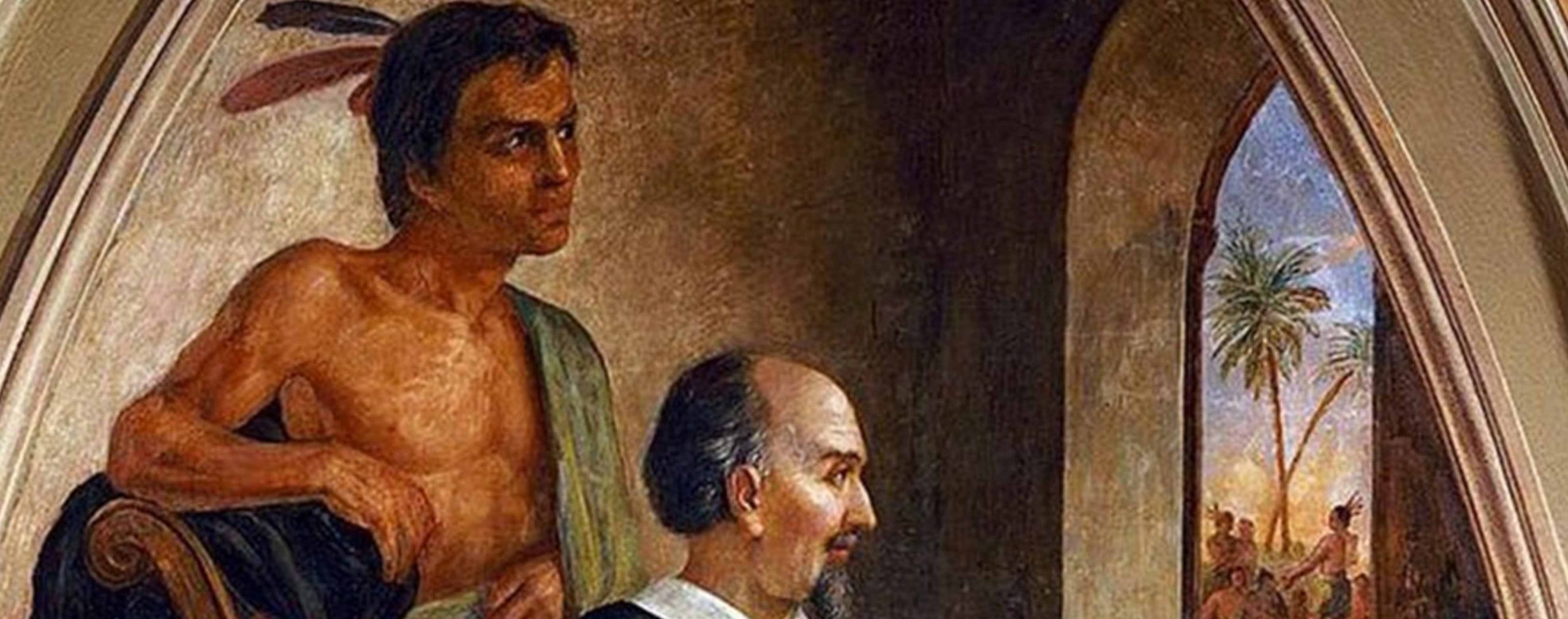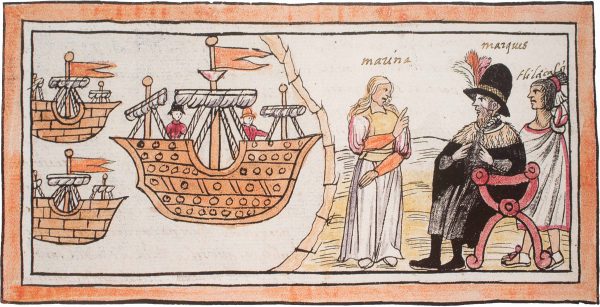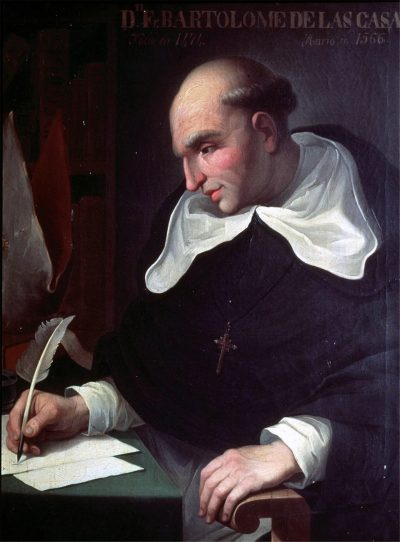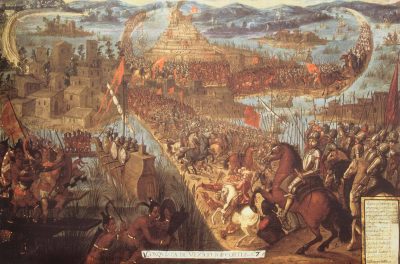Source:piomoa.es
The question of the treatment of the natives was of far greater concern in Spain than it had been, or would later be, in any other empire, the treatment of subject peoples, the right to whose conquest was rarely questioned. In the Spanish case, conquest was justified as a means of “bringing the light of the Gospel” to the natives and saving their souls, which would hardly be possible without prior conquest. But was there any right, in any case, to fight against previously unknown populations with whom there was no initial conflict? And did the actual conduct of the conquistadores and encomenderos correspond to the ideal of evangelisation?
The Dominican Francisco de Vitoria, one of the most outstanding European thinkers of his time, professor at the universities of Valladolid and Salamanca and previously a student in Paris, discussed the first point. Starting from natural law, Vitoria defended the full humanity of the Indians and their equality of fundamental rights with the Spaniards. This led him to deny the validity of the Tordesillas agreement on the division of half the world between Portugal and Spain, authorised by the Pope, as the Pope had no power over such matters. As one of the founders of international law, he asserted that the relationship between peoples should be based on understanding and law, so that only a defensive war or a war against a policy contrary to natural rights would be just, and not on religious or expansionist grounds.
With such principles, it was almost impossible to grant legitimacy to the conquest of America. There was, however, a conditional way out: natural rights (to life, to freedom, to property, etc.) included the rights to trade, the maintenance of peace and the spread of Christianity. If the Indians impeded these rights, war could be waged against them. To this end Vitoria distinguished several “just titles” for the Spanish presence in America: to spread the Gospel, to protect the baptised Indians against the reluctant, to combat crimes against nature, to reign the sovereign of Spain over the Indians, if they accepted it, to ally with one or the other tribes in wars between them, to rescue the natives from their backwardness.
Vitoria was one of the inspirers of the New Laws, but another very prominent one was the Dominican friar Bartolomé de las Casas, who was in favour of drastically abolishing the encomiendas. He did not succeed, although he did put an end to them in a relatively short period of time (they were gradually reduced until they practically disappeared in that century). Las Casas became a universal figure, going down in history for his little book Brevísima relación de la destrucción de las Indias, which he was probably already circulating as manuscript a year before the new laws were enacted and whose influence is still fully felt today.
In essence, the book describes two supposed realities, that of the Indians and that of the Spaniards in America. To begin with, it outlines a fantastic geography. In Hispaniola, he finds five kingdoms, one with a plain of 80 leagues from south to north (more than 400 kilometres, since the Castilian league was more than 5 kilometres long). The plain would be crossed by more than thirty thousand rivers, some twenty or twenty-five thousand of them very rich in gold, and twelve as big as the Ebro river in Spain; another kingdom of Hispaniola, also full of gold and copper mines, was alone bigger than Portugal (90,000 km2; the island is 76,000km2); he does not detail the extension of the other three kingdoms, but he also suggests their vastness, since only in one part of it more than fifty cities as big as Seville could have been built; thus, the island would not be smaller than half of Spain. He calculates more than five hundred leagues “from above the Darien to the kingdom and provinces of Nicaragua” (in reality 350 km). In the ancient Aztec Empire, the Spaniards would have massacred the people “in four hundred and fifty leagues around the city of Mexico (…), where there were four and five great kingdoms, as large and much happier than Spain” (if true, there would be eight Spains). Guatemala was “more than a hundred leagues in a block”. The island of Trinidad was “much larger than Sicily” (in reality it is six times smaller). And the mainland discovered would exceed 1,000 leagues! of coastline?
He makes no bones about demographics either. The coasts of the mainland were “all filled like a beehive of people (…) it seems that God put in those lands all or most of the whole human race”; there was no region that was not “densely populated”. The Yucatan “was full of an infinite number of people”. Florida, too, enjoyed “large populations”. The West Indies had been “the most populous lands in the world”, and the small islands of the Lucayas or Bahamas alone would have fed more than half a million Indians. Central America enjoyed “the largest and happiest and most populous land believed to exist in the world”. Etc.
These facts defied common sense and required great credulity to be accepted, even among those who had not left Europe. A population is limited by the availability of resources, the techniques for exploiting them and epidemic diseases (secondarily wars). The territories discovered by the Spanish consisted for the most part of vast jungles with large swampy areas, large and generally barren mountain ranges, and desert regions. The jungles were roamed by small groups of hunters and gatherers, and any intruder was liable to starve to death there, not knowing the right places to obtain food: indeed, large numbers of Spaniards and civilised Indians actually died of starvation when they entered such places. Of course, there was no lack of fertile and productive areas, but even the Aztec and Inca civilisations did not have adequate techniques to make the most of them, lacking the plough, draught animals and the wheel. For the rest, to suppose that their only epidemics came from outside hardly rises to the level of nonsense.
This fantastic overpopulation was not the only marvel Las Casas described, for its urbanisation was even more dazzling: with the colossal riches of Nicaragua, “it was truly a thing of admiration to see how populated it was with towns, almost three or four leagues in length”, which would make them numerous cities larger than any in Europe. This is normal considering that New Spain had many more inhabited cities than “Toledo and Seville and Valladolid and Zaragoza together with Barcelona”, so that “to walk around them you have to walk more than a thousand and eight hundred leagues” (almost ten thousand kilometres). With “two million temples”, moreover.
No less marvellous was the character of the Indians, always “the meekest sheep”, “without malice or bending, most obedient and most faithful”; the people “most humble, most patient, most peaceful and quiet, without quarrels or bustle, not quarrelsome (…) without rancour, without hatred, without hatred, without hatred, without hatred, without hatred, without rancour, without rancour”. They were “without grudges, without hatred, without desire for revenge that there is in the world”; “They lacked vices or sins”; “Very well disposed, sane, political and well-ordered people”; “They do not possess or want to possess earthly goods”; “Not proud, not ambitious, not greedy”; “Clean and unoccupied, of lively understanding, very capable and docile for all good doctrine”. This description must have astounded the Spaniards in America, including the friars: the cannibalism, the human sacrifices, the ferocious inter-tribal wars, the poisoned arrows from which many Spaniards had died, the polygamy of the caciques, the “flowery wars”, the oppression of some ethnic groups over others…, all this must have been just a dream of the conquistadores. According to Las Casas, the Indians lived in a paradise without original sin. Until the arrival of the Spaniards, of course.
These stories might have been believed in Europe without a modicum of rational criticism, but those with direct knowledge of the New World knew for certain that they were lies on a truly disturbing scale. For Las Casas could not plead ignorance, since he had lived for many years in those lands and was not ignorant, he would surely have some notion of methods of quantification and measurement. It is therefore clear that he was deliberately trying to deceive those who remained in Spain.
Share this article
On This Day
- 1528 Prince Felipe is sworn as heir to the Spanish kingdoms in Madrid.
- 1593 The city of San Salvador de Jujuy (Argentina) is founded by Francisco Argañaraz y Murguía.
- 1776 Battle of Lexington and Concord (United States).
History of Spain
26 August 2020
27 January 2021
Communism: Now and Then
23 December 2022
28 July 2021









